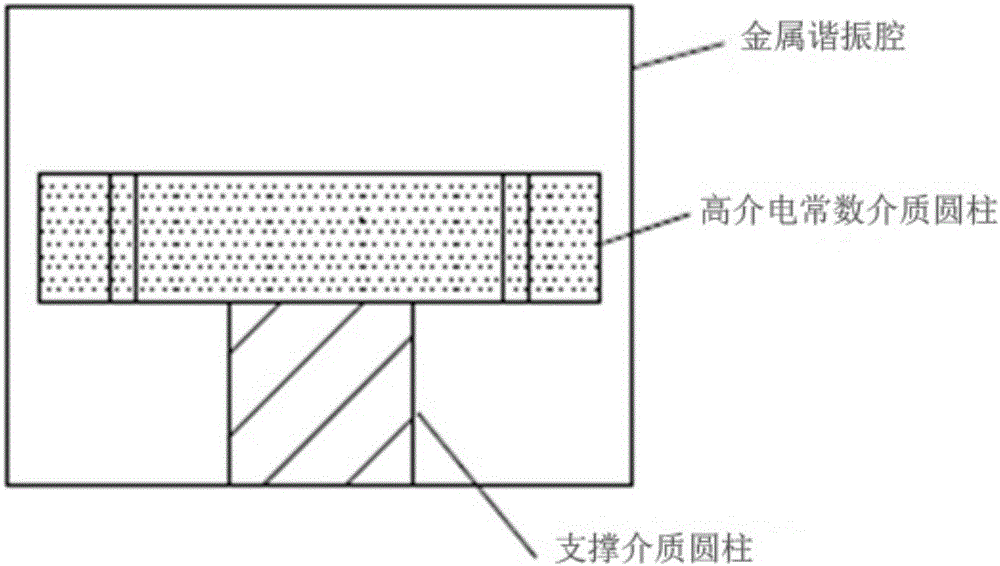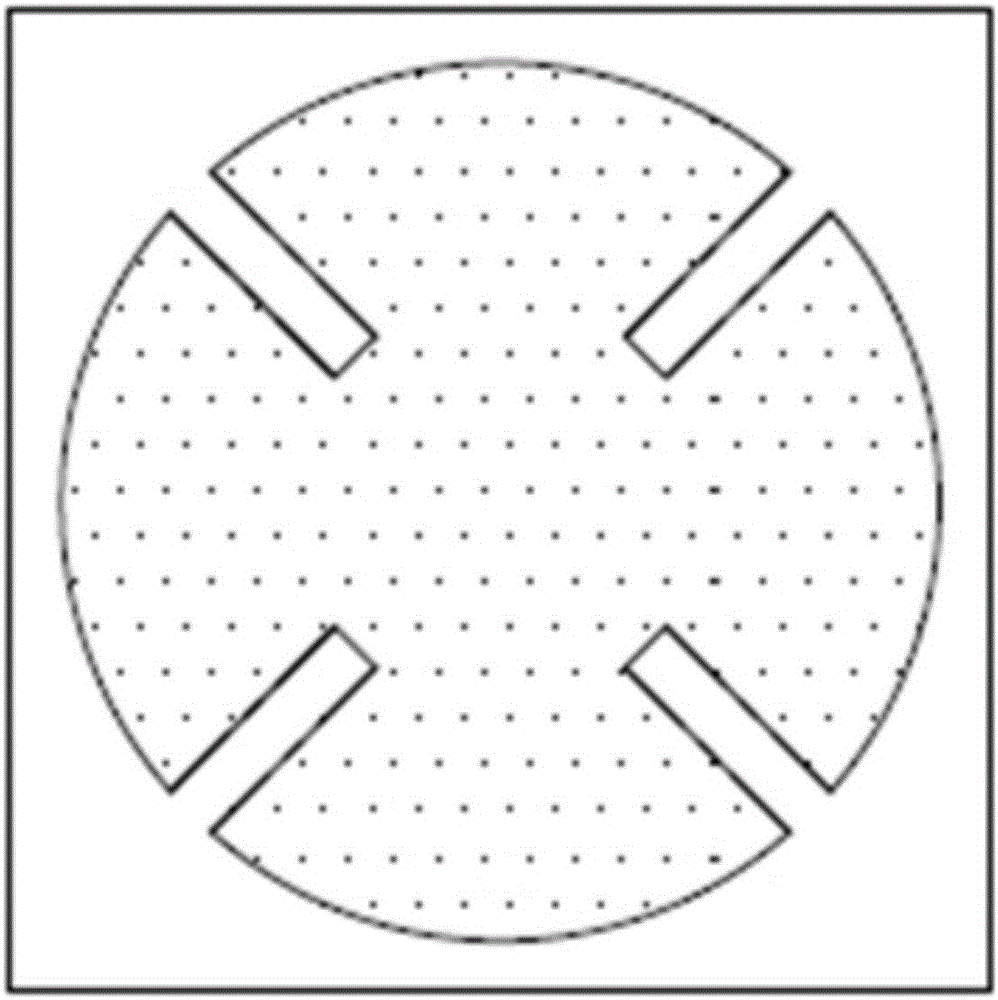Three-mode dielectric cavity filter
A dielectric cavity and filter technology, which is applied to waveguide devices, resonators, electrical components, etc., can solve the problems of reducing filter volume and high filter loss, and achieve the effect of reducing volume and low passband loss
- Summary
- Abstract
- Description
- Claims
- Application Information
AI Technical Summary
Problems solved by technology
Method used
Image
Examples
specific Embodiment 1
[0033] The three-mode dielectric cavity filter includes: a three-mode dielectric cavity resonator with a single-cavity structure as shown in Figure 1(a) and Figure 1(b), an input terminal, an output terminal and a coupling circuit. The three-mode dielectric cavity resonator with a single-cavity structure includes: a metal resonator, a support dielectric cylinder loaded in the center of the metal resonator, a high dielectric constant dielectric cylinder placed on the support dielectric cylinder, and a high dielectric constant dielectric cylinder at 45o , 135o, 225o, and 315o have slots in the four radial directions. The depth and length of the slots in the four directions are the same. Adjust the TE by adjusting the diameter, height, and slot length of the high dielectric constant dielectric cylinder. 01δ mode and two degenerate HEH 11 mode (HEH 11⊥ mode and HEH 11∥ mode), so that the resonant frequencies of the three modes are the same to reach the required frequency, thus r...
specific Embodiment 2
[0037] On the basis of the specific embodiment 1, screw the adjusting screws T1, T2, T3, T4 from the cover plate above the metal resonant cavity, wherein the adjusting screw T1 is used for TE 01δ Mode tuning, screw tuning T2 and screw tuning T3 are used for HEH 11∥ mode and HEH 11⊥ For tuning of the mode, set the tuning screw T4 on the diagonal of the cavity (corresponding to the position of the diagonal of the slot of the high dielectric constant dielectric cylinder), which is used in the HEH 11∥ mode and HEH 11⊥ A certain amount of coupling (cross-coupling) is introduced between the modes.
[0038] Figure 9 It is the S-parameter electromagnetic simulation curve of a one-cavity three-mode (third-order) filter (using commercial software HFSS simulation). The structure used in this filter is as described in Figure 5. The main parameters are listed as follows:
[0039] The size of the metal resonant cavity is 34*34*26mm, and the boundary of the cavity wall is set to metal...
specific Embodiment 3
[0046] Cascading a plurality of three-mode dielectric cavity filters with a single-cavity structure shown in Embodiment 1 or Embodiment 2 can realize high-order filtering. Figure 7(a) and Figure 7(b) are the structural diagrams of a two-cavity (6-order) dielectric filter, port P1 passes through the HEH of the probe and resonant cavity 1 11⊥ Mode coupling; port P2 via probe to HEH of resonator 2 11⊥ Mode coupling; the coupling structure between the three modes of resonator 1 and resonator 2 is the same as Image 6 The mode coupling structure in the resonator is the same; the HEH of resonator 1 11∥ Mode and HEH in cavity 2 11∥ The modes are capacitively coupled through metal probes to realize the cascading of resonant cavities, and the metal probes are set on the teflon dielectric probe base in the window between the two cavities. The equivalent circuit topology of a two-cavity (6th order) dielectric filter is as follows Figure 8 shown.
[0047] It should be noted that the...
PUM
 Login to View More
Login to View More Abstract
Description
Claims
Application Information
 Login to View More
Login to View More - R&D
- Intellectual Property
- Life Sciences
- Materials
- Tech Scout
- Unparalleled Data Quality
- Higher Quality Content
- 60% Fewer Hallucinations
Browse by: Latest US Patents, China's latest patents, Technical Efficacy Thesaurus, Application Domain, Technology Topic, Popular Technical Reports.
© 2025 PatSnap. All rights reserved.Legal|Privacy policy|Modern Slavery Act Transparency Statement|Sitemap|About US| Contact US: help@patsnap.com



